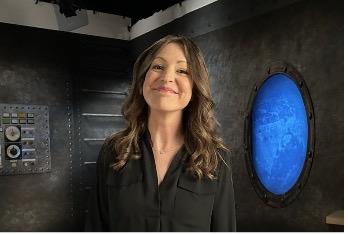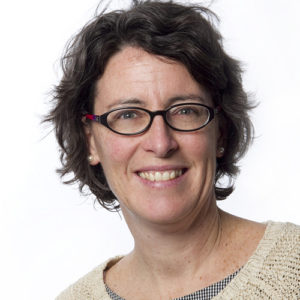10,000 Years of Archaeology Below the Great Lake
The Great Lakes of North America were once at much lower water levels, and during these times people, plants, and animals inhabited shorelines that are now submerged. Underwater archaeological research in the Great Lakes has revealed evidence that 9,000 years ago in Lake Huron people were hunting animals and using stone tools on the Alpena-Amberley Ridge, a feature now ~100 feet deep.
Join Ashley Lemke, an Associate Professor of Anthropology at the University of Wisconsin-Milwaukee, for an overview of her work as an archaeologist on land and underwater.

Featured Scientist
Ashley Lemke, Associate Professor of Anthropology at the University of Wisconsin-Milwaukee, is an internationally recognized expert for her innovative work in underwater archaeology and her commitment to expanding the frontiers of archaeological science through technology, collaboration, and education.
Learn more about Ashley and her work.
- When: October 7, 2025, 1:00 – 2:00 Central Time
- Target audience: Middle school students and up and their educators
- Please pre-register for Zoom-based webinar event
Suggested Pre Webinar Activities
Have you ever ridden in a plane, sat atop a Ferris wheel, or climbed a tree? Think about how this perspective (sometimes referred to as a “birds-eye” view or aerial perspective) makes the world seem different than the normal lateral (sideways) perspective we usually view the world from.
Suggestion 1: Investigate aerial perspective by using aerial photographs.
Some resources that can provide a “birds-eye” view of past and current Wisconsin landscapes may be found at the Wisconsin State Cartographer’s Office Aerial Imagery Data website.
Note: One purpose of Dr. Lemke’s research is to obtain images of the land surfaces that lie below the waters of the Great Lakes.
Suggestion 2: Investigate the grid systems and/or multibeam sonar systems archaeologists use.
As archaeologists do their work, they record observations from both an aerial and a lateral perspective. The location of an object is recorded using a grid.
The Coordinates and Gridding lesson from the National Park Service asks “How do archeologists record the location of artifacts on a coordinates grid?” as its essential question. This lesson is the fifth in a series of seven lessons that delve into archaeology. The focus of the coordinates and gridding lesson is a lateral perspective.
The Needles and Haystacks activity from the National Oceanic and Atmospheric Administration, Ocean Exploration and Research incorporates an aerial or 3-D perspective by using sounding rods as a data collection tool.
The Wet Maps activity from the National Oceanic and Atmospheric Administration, Ocean Exploration and Research has students develop and use models to explore seafloor features; analyze and interpret data to explain how multibeam sonar is used to identify patterns of ocean floor structures; construct three-dimensional maps; and learn how multibeam sonar technology extends the measurement and exploration capacity of modern ocean exploration.
Suggested Post Webinar Activity
Extend your interest in underwater archaeology to learn about Great Lakes shipwrecks and maritime archaeology.
- View PBS Wisconsin Shipwrecks documentary a multi-faceted state-of-the-art virtual reality experience taking viewers to the depths of the Great Lakes (60-minutes).
- Explore Wisconsin’s Great Lakes Shipwrecks website, a comprehensive online resource produced by Wisconsin Sea Grant and the Wisconsin Historical Society that invites you to explore Wisconsin’s Great Lakes shipwrecks through underwater video, historic photographs and archeological discoveries. Their education site has activities suitable for upper elementary and lower middle school grades.
- Play PBS Education Legend of the Lost Emerald an online point and click game that has you step into the shoes of Jules, a maritime archaeologist to recover the stories behind shipwrecks inspired by real Great Lakes history. The game is geared toward upper elementary but is still suitable for middle school students.
Not in Wisconsin? Contact your Center for Great Lakes Literacy representative for comparable resources featuring shipwrecks within other Great Lakes.
Reference Material
Ashley Lemke (2020): Submerged prehistory and anthropological archaeology: Do underwater studies contribute to theory? , The Journal of Island and Coastal Archaeology, DOI: 10.1080/15564894.2020.1782540
John M. O’Shea, Ashley K. Lemke, Elizabeth P. Sonnenburg, Robert G. Reynolds, and Brian D. Abbott (2014): A 9,000-year-old caribou hunting structure beneath Lake Huron, Proceedings of the National Academy of Sciences 111 (19), 6911-6915,
DOI: epdf/10.1073/pnas.1404404111
Don’t forget to pre-register for the Zoom-based webinar event




